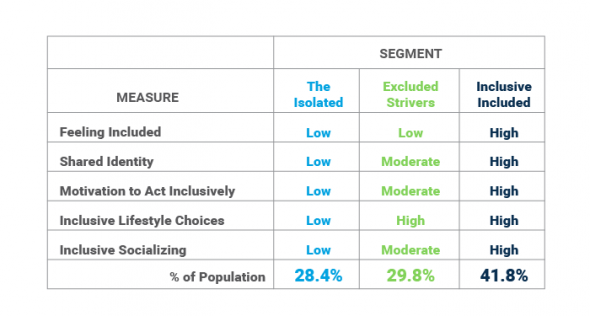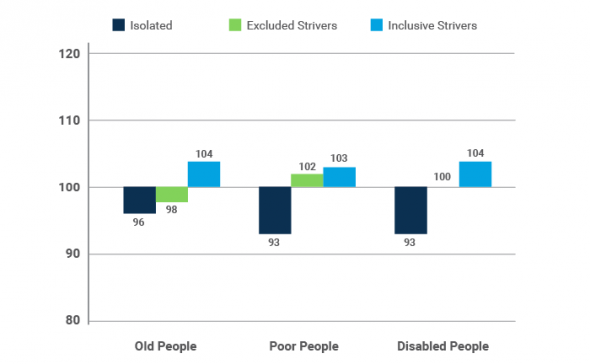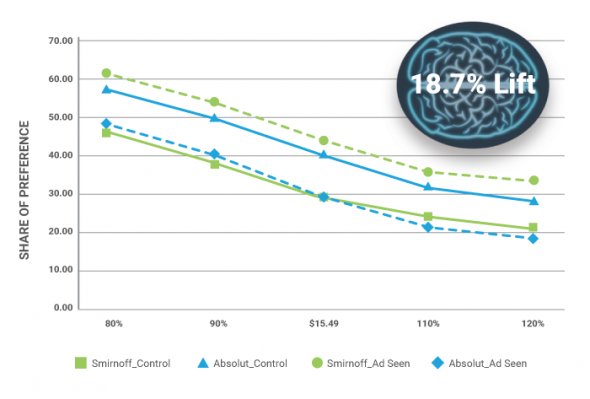Implicit Bias and How Smirnoff Is Transforming Global Attitudes Towards Others
The phrase “implicit bias” often carries a nasty connotation. Here’s just one headline from the last four months: “How Racism Persists: Unconscious Bias May Play a Role.”
Partiality. Prejudice. Racism. And this bias is thought to be all the more insidious because it’s locked away in our subconscious where we can’t do anything about it.
But as Dr. Aaron Reid explained in his TMRE 2016 presentation Wednesday, implicit bias is not necessarily negative or positive—it’s both.
“Implicit bias is simply a systematic tendency toward something,” Dr. Reid explained. “It’s the automatic associations you have in your mind, and those associations can be positive and they can be negative.”
Understanding Implicit Bias and Behavior
While System 1 certainly influences behavior, it’s not the only thing that determines how people act. If we have the motivation and the opportunity, we can influence whether our System 1 mind impacts our behavior or not.
“When you have either low motivation or lack the opportunity to reflect and reason, your implicit attitude has a much stronger impact on your judgment or behavior,” said Dr. Reid. “But when you’re motivated and have the opportunity, your System 2 thinking can intervene if you don’t want an implicit attitude to influence behavior.”
Science provides methods for quantifying implicit biases, both positive and negative. Sentient Prime implicit research technology, for example, can give you a read on your degree of biases both toward and away from people, from brands, products, and advertising.
It’s called implicit association testing and it’s a powerful tool that helps measure the impact of the non-conscious.
Can We Change Implicit Associations to Be More Inclusive?
In the Spring of 2016, Sentient examined implicit biases in a study with Smirnoff. The project objective, born from the mind of Smirnoff’s Luke Atkinson, was to make a real contribution to the world with the idea of a brand that “welcomes everyone” and stands for “good times together.”
Atkinson wanted to focus on inclusivity.
Opposite the concept of implicit bias, inclusivity moves people from thinking, ‘How do we prevent or reduce prejudice,’ to ‘How do we promote inclusivity?’ And that positive, welcoming feeling is what Smirnoff wanted its brand to inspire.
Implicit Association Testing in Action
We captured baseline data in two studies about inclusivity from 1,400 United Kingdom respondents and 1,300 from the United States. From there, we could see if the creative content produced by the Smirnoff brand could actually make people feel more inclusive toward others.
We utilized implicit and explicit measures from the behavioral sciences in five comprehensive areas of inclusivity:
- Feeling included
- Sharing identity
- Motivation to act inclusively
- Inclusive lifestyle choices
- Inclusive socializing
Three segments emerged from the data in both the U.S. and the U.K:
- The Isolated: those who feel excluded and act exclusively
- Excluded Strivers: those who make inclusive lifestyle choices but feel excluded
- Inclusive Included: those who feel included and also act more inclusively

We were then able to analyze implicit attitudes toward groups of people—based on race, gender, sexuality, and more—and split the results by segment. Some of the results were sobering.

“If you ask people an explicit question like this, you’re not going to get the real answer,” Dr. Reid said.
“But if you measure it implicitly you get really keen insight: a significant portion of the population has a negative implicit bias toward ‘old people’, toward ‘poor people’, and toward ‘disabled people’.”
Smirnoff Opens Up to Promote Inclusivity
Based on our baseline data, Smirnoff created an ad targeted at changing attitudes toward disabled people.
Smirnoff was proud of the creative. But would it have a real impact?
Sentient performed a Subtext™ ad test to see whether exposure to the ad was changing the implicit memory structures within Smirnoff’s target audience’s mind. Using consumer neuroscience tools, we measured the four key components of advertising effectiveness:
- Attention
- Affect
- Memory
- Desirability (a combination of System 1 and System 2)
Emotional preference following exposure to the ad showed a complete reversal following a single exposure.

“From a brand preference perspective,” Dr. Reid noted, “this is a very successful ad.”
Digging Deeper Into the Data
Emotional memory analysis carried the study a step further by analyzing which elements of the ad are responsible for the change in implicit attitude.
“The implicit memory connections are changing in the minds of consumers when you show them your ad,” Dr. Reid explained. “We can cut the data to see the moments of the ad that are related to those memory changes that you’re trying to affect.”
Among female viewers, there were clear positive emotional deviations at the moments that the primary female student was telling her story and began to feel the joy of dancing.
So impact on the brand is clear. What about inclusivity? Did we strike an impact? Did we change people’s attitudes to feel more inclusive?
Only among women.
“The storytelling at the beginning of the ad isn’t resonating in a positive way with men on average, it appears to reinforce a negative bias toward disabled people among the ‘Isolated’ segment” noted Dr. Reid. “It provided insight into how to optimize the creative with cuts that tell the story of the male focal character, Chris Fonseca, in a clear and compelling way to men.”
For the Isolate segment, what may be missing is motivation. Opportunity to change their judgment is there, but without motivation, there’s no override for that System 1 bias.
Next Steps for Smirnoff (and the Rest of Us?)
For its part, Smirnoff is planning a global rollout of the “We’re Open campaign.”
Regardless of the results, Smirnoff’s efforts show how it’s possible for us to address implicit bias in this country and globally. First we need to understand that System 1 mind—where it comes from—then we can focus on how to influence change.
As Dr. Reid said: “We need to understand how reason and emotion work together to drive behavior.”

